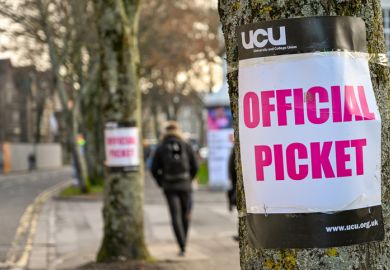Tenured staff are outnumbered at Australian universities, following an unprecedented lurch towards contracts and casualisation.
Newly released education department figures show that on a full-time equivalent basis, staff on limited-term contracts and in casual employment now represent 51 per cent of Australia’s higher education workforce.
The 2018 statistics show that the number of tenured staff declined for the first time in at least a decade, having fallen by 2 per cent. Meanwhile the ranks of contract workers rose by 11 per cent – the biggest increase in at least 10 years.
The estimated number of casual staff also rose by about 11 per cent, meaning that even though the overall workforce swelled by 4 per cent, the proportion in secure employment shrunk.
The shift was accompanied by increasing specialisation of roles. The number of research-only staff increased by 4 per cent while the teaching-only tally rose by 15 per cent. Meanwhile, the ranks of traditional teaching and research academics declined by 1 per cent.
The National Tertiary Education Union said that the sector had lost the equivalent of 1,400 secure full-time jobs this year, while casualisation and short-term contracts skyrocketed. NTEU president Alison Barnes said this was bad news for students as well as staff.
“There is a place for casual and part-time work, but these positions are replacing secure full-time jobs,” she said. “We now have staff being paid less, with no leave entitlements or access to professional development, working side-by-side with permanent staff.”
The NTEU said that its recent analysis showed that about eight out of 10 teaching-only jobs were casual, on a full-time equivalent basis, while a similar proportion of research-only positions were limited-term contracts. “The move to greater specialisation of academic work goes hand in hand with an increase in job insecurity,” Dr Barnes said.
On 12 December the Tertiary Education Quality and Standards Agency released data showing that while the higher education sector is increasingly reliant on revenue from international students, the increased flows from foreign fees are not keeping pace with burgeoning staffing costs.
Register to continue
Why register?
- Registration is free and only takes a moment
- Once registered, you can read 3 articles a month
- Sign up for our newsletter
Subscribe
Or subscribe for unlimited access to:
- Unlimited access to news, views, insights & reviews
- Digital editions
- Digital access to THE’s university and college rankings analysis
Already registered or a current subscriber?








